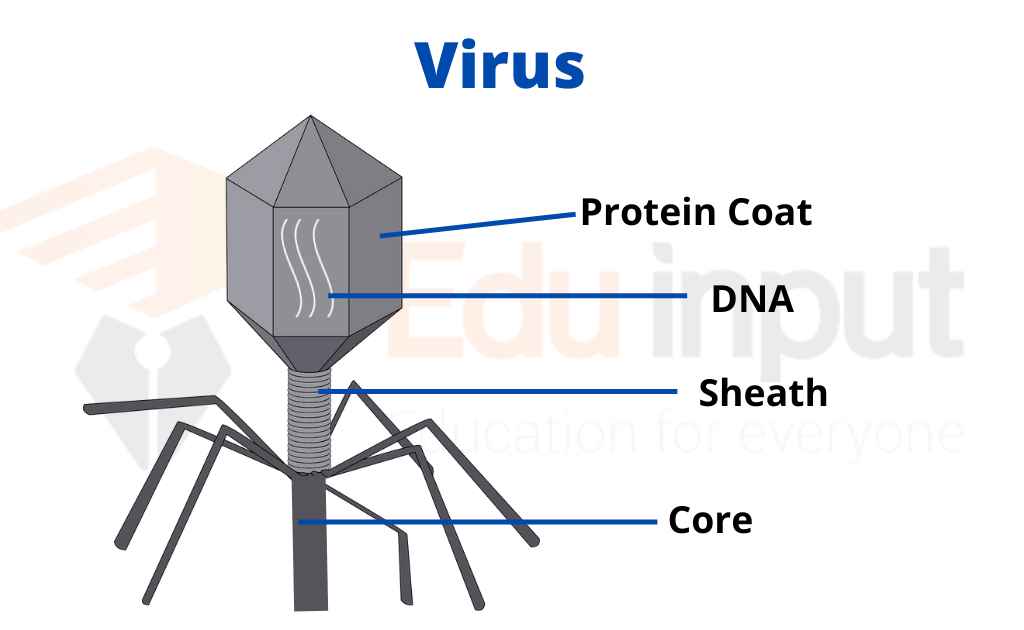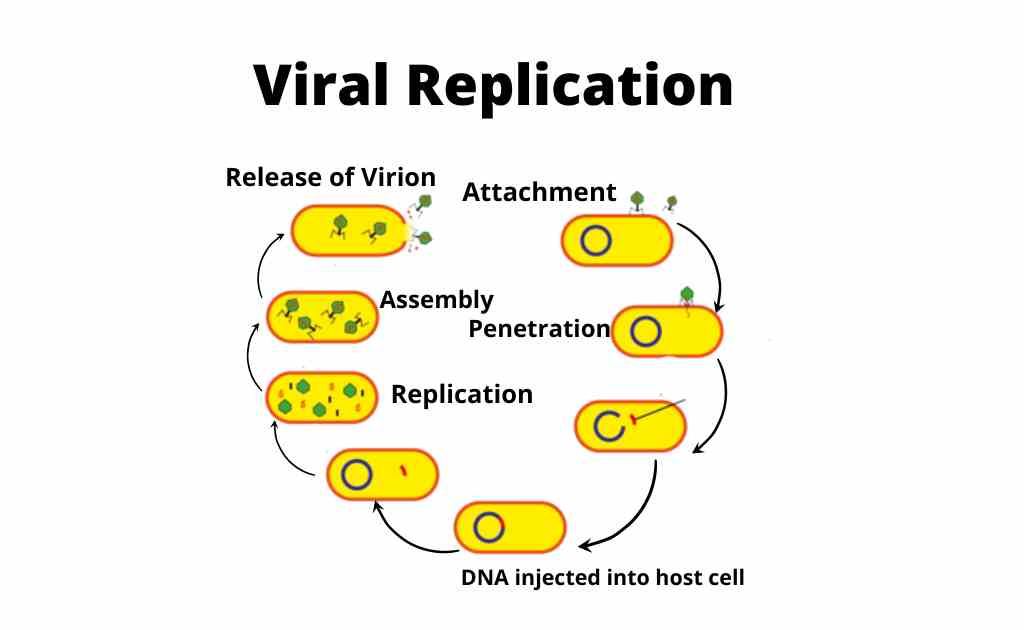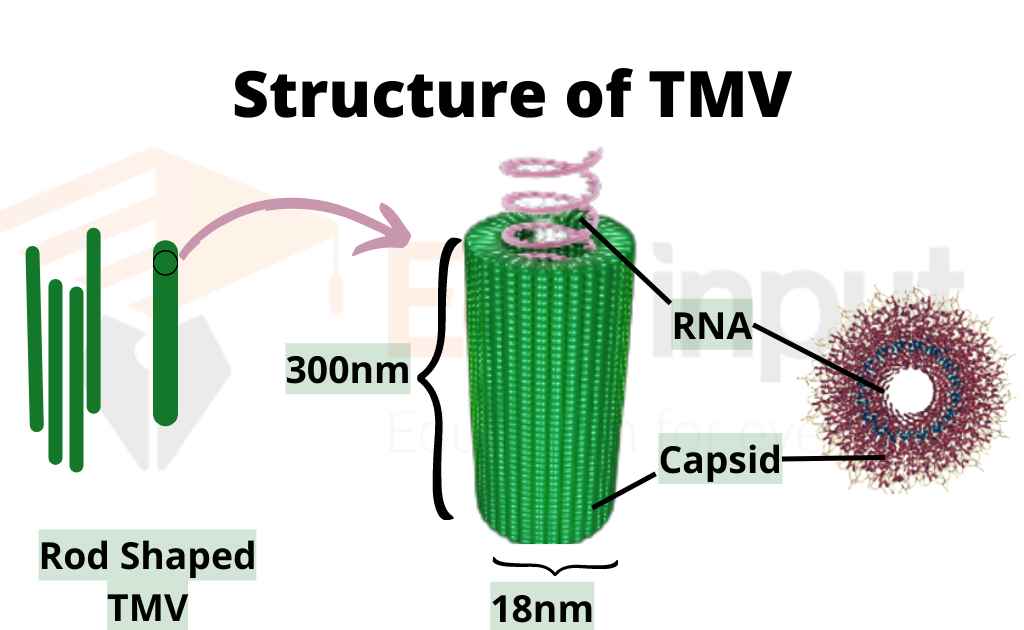Bacteriophage-Structure, Types, and Replication
Bacteriophages are viruses that infect bacteria. These viruses are extremely specific and only attack certain types of bacteria. Bacteriophagous means “bacteria eater.” A phage attacks its host by injecting viral DNA into the bacterial cell where it takes over the cell’s genetic material and uses it to replicate copies of itself. In doing so, the phage produces progeny viruses that then attack other cells. Bacteriophages are viruses that specifically target bacteria. They attach to specific receptors on the surface of bacteria and inject their genetic material inside.
Structure of Bacteriophage or Phage Virus
Phage virus infects Escherichia coli (bacteria). It has following components:
Head: It has an elongated head. The Head has different shapes like pyramidal, hexagonal, and prism-shaped structures. The tail is attached to the head. Double-stranded DNA molecules are present inside the head.
Tail: The tail has a complex structure.
Core: A layer of protein forms the inner tube or core of the tail. This core is enclosed in a sheath. This sheath is made up of another type of protein.
Collar: A collar is present on one side of the sheath.
End plates: The other side of the sheath has an end plate. Six tail fibers are attached to the end plate. Tail fibers are structures of attachment.
Types of Bacteriophage
There are different types of phage. T phages (T for type) are the best-known phage. T₂ and are types of T phage. T₂ and T4 are mainly used in phage studies.
The structure of T4 is studied by an electron microscope. The volume of phage is about 1/1000 of the host (bacteria). It resembles a tadpole (frog larva). It consists of a head and tail.
Replication of Bacteriophage
The Bacteriophage or phage virus replicates only inside the bacterial cell. Phage virus shows two types of cycles during its replication:
- Lytic Cycle
- Lysogenic Cycles
Lytic Cycle
The phage virus causes the lysis of the bacteria in the lytic cycle. Such viruses are called lytic or virulent phages. The lytic cycle is divided into the following steps:
Attachment Or Adsorption:
Bacteriophage is attached at the receptor site on the cell wall of the bacterium. A weak chemical union takes place between the virus and the receptor site.
Penetration:
The tail of the virus releases lysozyme enzymes. It dissolves a small part of the bacterial cell wall. The tail sheath contracts and pushes the tail core into bacteria through its cell wall and cell membrane. The virus injects its DNA into the bacterial cell like a syringe. The protein coat (tail and head) of the virus remains outside the bacterial cell. However, many animal viruses enter the host as a whole.
Multiplication:
The viral DNA starts controlling the biosynthetic machinery of the bacteria inside the bacterial cell. It induces the bacterial cell to synthesize the parts of the virus, protein, and DNA. The virus multiplies to form many new viruses. Approximately 200 new viruses are formed after 25 minutes of the infection.
Lysis or Release:
Many viruses are formed in bacteria. The bacterial cell undergoes lysis and bursts. The newly formed viruses are released and infect other bacteria. Heads are packed with DNA.
Lysogenic Cycle
The phage virus does not cause lysis of the bacteria in the lysogenic cycle. The phage which causes lysogeny is called temperate or lysogenic phage. The phage does not always destroy bacteria. Sometimes, it lives peacefully inside the bacterial cell. It does not control the biosynthetic machinery of the host bacteria.
Lysogeny:
The viral DNA incorporated into the bacterial chromosome. The phage in this state is called Proghage. This process is called lysogeny. The bacteria continue to live and reproduce normally in this condition. The viral DNA becomes part of the bacterial chromosome. It passes to each daughter cell in all coming generations.
Induction:
Sometimes, the viral DNA detaches from the bacterial chromosome. It starts the lytic cycle. This process is called induction. Lysogenic bacteria are resistant to viral infection from the same or similar phage virus.

 written by
written by 





Leave a Reply